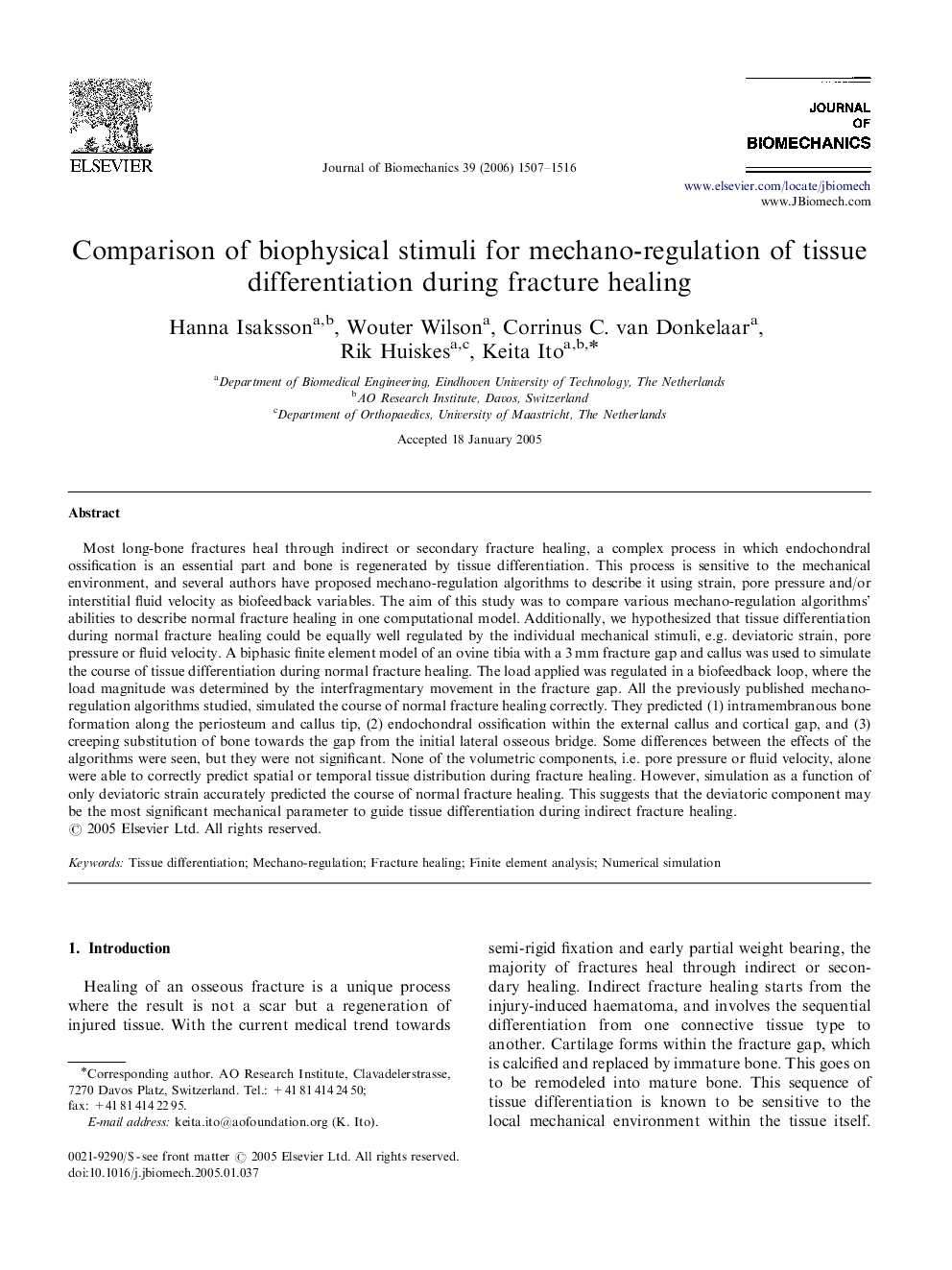| Article ID | Journal | Published Year | Pages | File Type |
|---|---|---|---|---|
| 874782 | Journal of Biomechanics | 2006 | 10 Pages |
Most long-bone fractures heal through indirect or secondary fracture healing, a complex process in which endochondral ossification is an essential part and bone is regenerated by tissue differentiation. This process is sensitive to the mechanical environment, and several authors have proposed mechano-regulation algorithms to describe it using strain, pore pressure and/or interstitial fluid velocity as biofeedback variables. The aim of this study was to compare various mechano-regulation algorithms’ abilities to describe normal fracture healing in one computational model. Additionally, we hypothesized that tissue differentiation during normal fracture healing could be equally well regulated by the individual mechanical stimuli, e.g. deviatoric strain, pore pressure or fluid velocity. A biphasic finite element model of an ovine tibia with a 3 mm fracture gap and callus was used to simulate the course of tissue differentiation during normal fracture healing. The load applied was regulated in a biofeedback loop, where the load magnitude was determined by the interfragmentary movement in the fracture gap. All the previously published mechano-regulation algorithms studied, simulated the course of normal fracture healing correctly. They predicted (1) intramembranous bone formation along the periosteum and callus tip, (2) endochondral ossification within the external callus and cortical gap, and (3) creeping substitution of bone towards the gap from the initial lateral osseous bridge. Some differences between the effects of the algorithms were seen, but they were not significant. None of the volumetric components, i.e. pore pressure or fluid velocity, alone were able to correctly predict spatial or temporal tissue distribution during fracture healing. However, simulation as a function of only deviatoric strain accurately predicted the course of normal fracture healing. This suggests that the deviatoric component may be the most significant mechanical parameter to guide tissue differentiation during indirect fracture healing.
